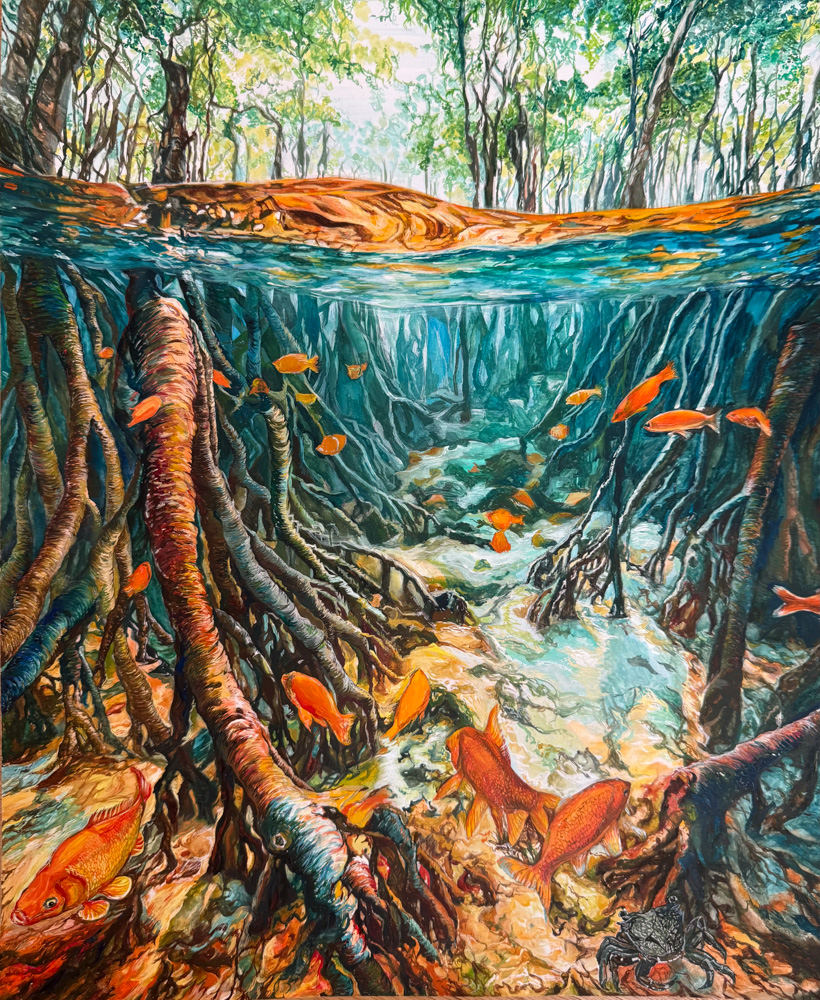2025 Science Without Borders® Challenge Finalists: 15-19 year old students
The response to our 2025 Science Without Borders® Challenge has been overwhelming! We’ve been blown away by the sheer number of submissions we received from aspiring young scientists and artists worldwide. These gifted students come from all over the globe, including The Bahamas, Canada, China, Greece, Japan, Indonesia, Korea, Thailand, and the United States. Their artwork brings the 2025 theme, “Marine Keystone Species,” to life in extraordinary ways. From intricate illustrations of krill and coral to impactful portrayals of sharks, sea otters, polar bears, mangroves, and more, each piece highlights the essential roles these species play in maintaining ocean balance and biodiversity.
Entries to the Science Without Borders® Challenge are judged in two categories based on age. Here are the finalists selected from the older group of applicants, students 15-19 years old:
"The Sea's Yggdrasil" by Daniel Yu, Age 17, United States of America
ARTIST'S STATEMENT: Mangrove trees are not just plants; they are foundation species that create and sustain entire marine habitats. Their complex root systems serve as nurseries for a wide range of marine life, including the Aratus pisonii and goldfishes depicted in my artwork. Mangroves play a crucial ecological role by stabilizing coastlines, preventing erosion, and filtering pollutants from the water, protecting the health of surrounding marine ecosystems. Many creatures rely on mangrove forests as a safe haven during their juvenile stages before venturing into open waters. These intricate webs of roots are teeming with life such as small fish, mollusks, and juvenile sharks, supporting biodiversity and food chains in tropical and subtropical waters. I conveyed this complexity by layering tangled roots in the foreground with bold textures, while those in the background fade into cool blues. Without this keystone species, biodiversity in the oceans would drastically decline and coastal ecosystems would collapse.
